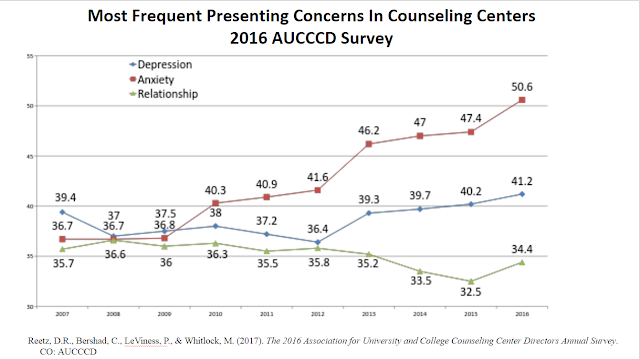Literary Review #5

Beiter, R., et al. "The Prevalence and Correlates of Depression, Anxiety, and Stress in a Sample of College Students." Journal of Affective Disorders , vol. 173, 01 Mar. 2015, p. 90-96. EBSCO host , doi:10.1016/j.jad.2014.10.054. This reading is about a study conducted on a sample of college students to determine if there is a correlation between their concerns and the increase report of anxiety. The results indicated that the top three concerns were academic performance, pressure to succeed, and post-graduation plans. Demographically, the most stressed, anxious, and depressed students were transfers, upperclassmen, and those living off-campus. Beiter, R. a Nash, R. a McCrady, M. a Rhoades, D. a Linscomb, M. a Clarahan, M. a Sammut, S. a a Department of Psychology, Sociology and Social Work, Franciscan University of Steubenville Depression: “self-disparaging, dispirited, gloomy, blue, conv



